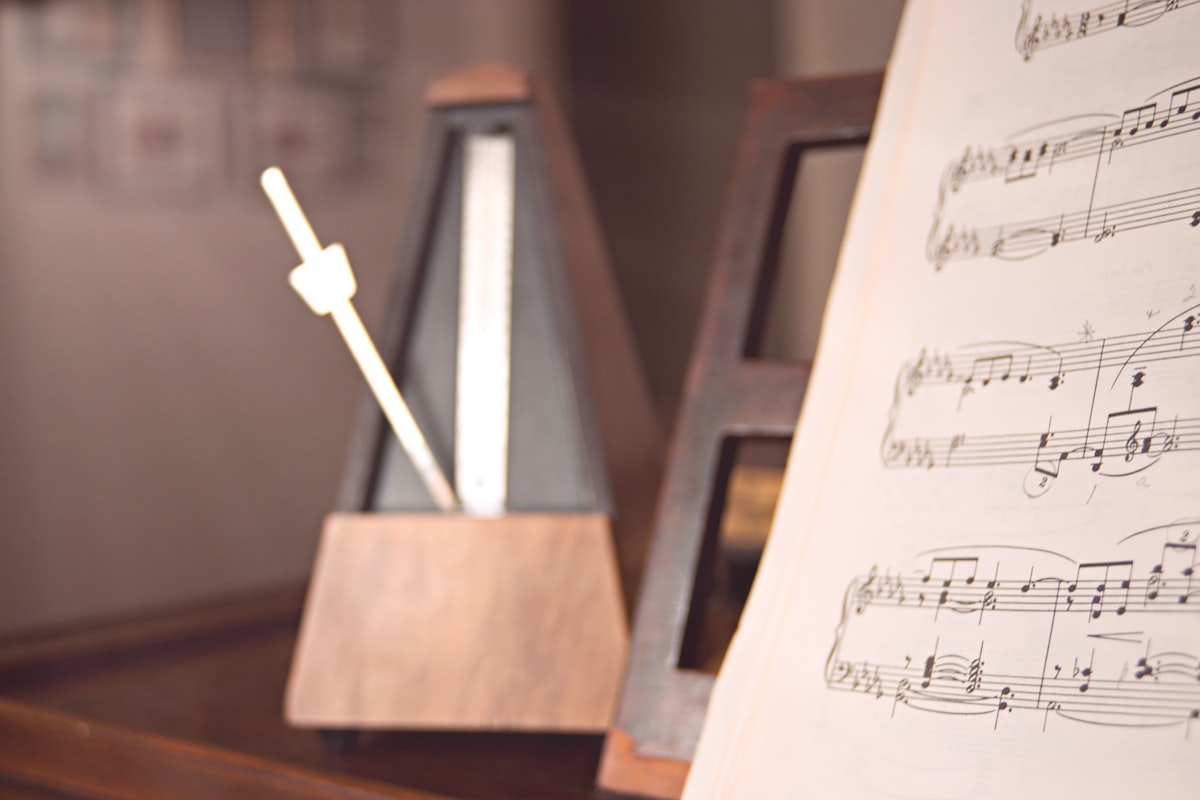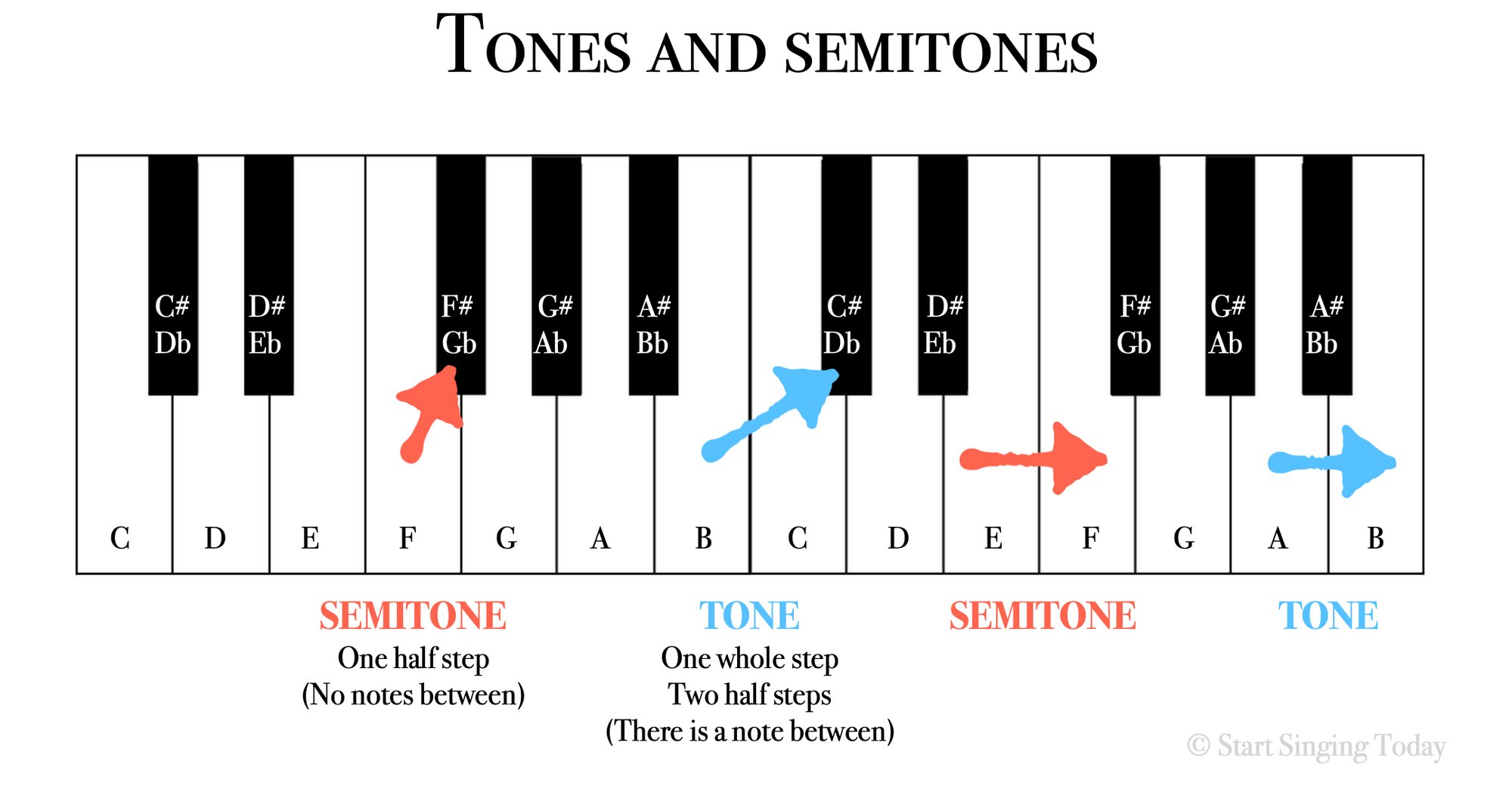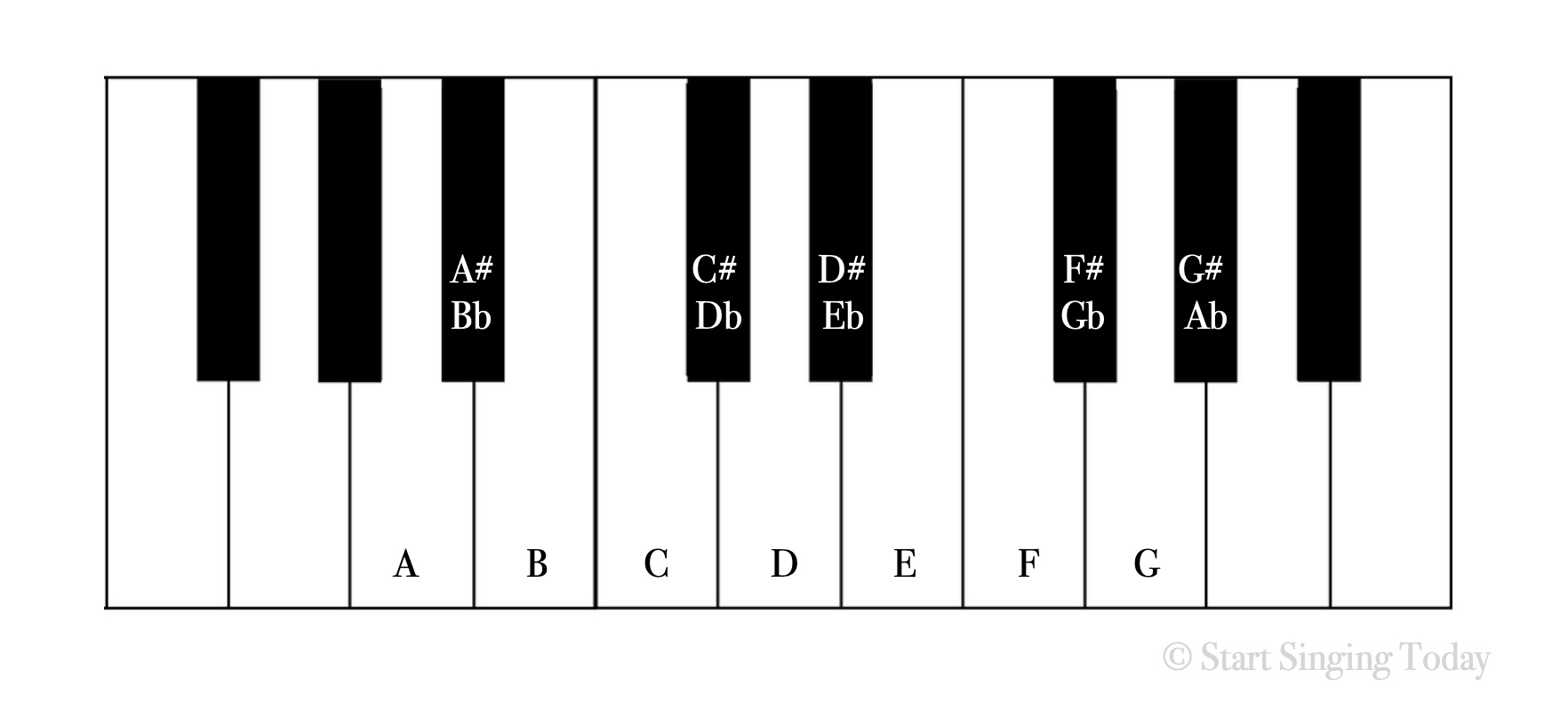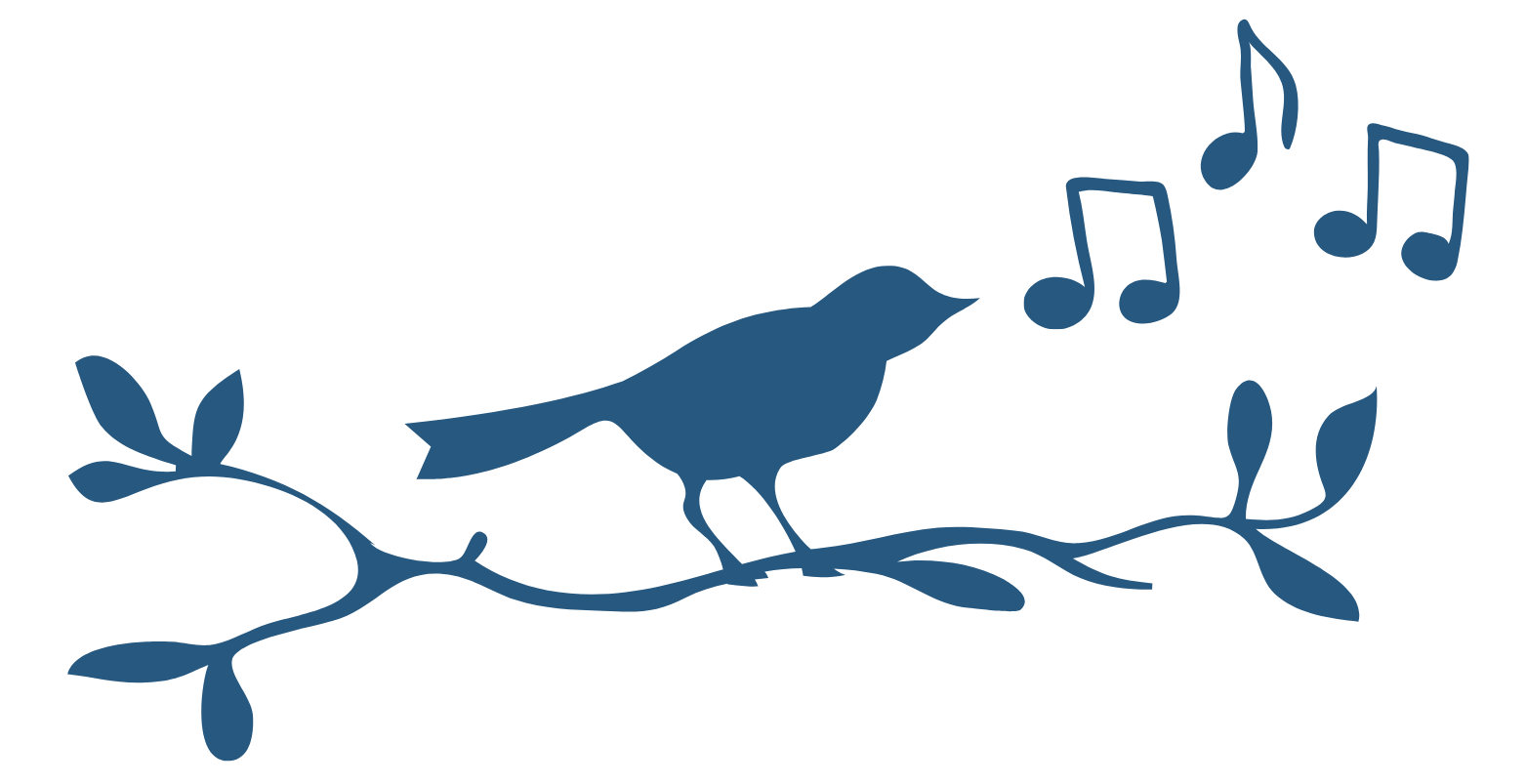Singing Scales for Beginners: Basic Theory and Warmups

There are hundreds of scales in music theory that can overwhelm a beginner, which is probably why many people who sing don't bother with these technicalities. To be a good singer, it is important to have at least a basic knowledge of music theory, and scales are one of these basics. Here you will find beginner scales that you can learn and sing.
The most common singing scales for beginners are the major, minor and chromatic scales. These are distinguished by their tone and semitone patterns (steps in pitch). Most scales contain 7 notes from the musical alphabet, including natural (♮), sharp (♯) and flat (♭) notes. For example, 'G# Major'.
I will explain these scales in more detail below, including tracks that allow you to hear them. I have also included a number of warmup variations that involve singing the scales.
Singing Scales for Beginners
Singing scales helps familiarise your voice and brain with the different sounds in music. This helps with pitching notes and jumping from one pitch to another (check out this article if you struggle with pitch). It also improves rhythm and aids in ear training.
As I explain in another article, it's never too late to learn how to sing. The fact that you're reading through this guide for beginners is a great start and tells me that you're on the right track.
It's not easy to explain scales without having an understanding of tones and semitones. These are different-sized steps in pitch that are used in every scale. Therefore, this article has been structured in the following way (you can jump to whatever is relevant to you).
- Definition and examples of a tone and semitone
- Major scales
- Minor scales
- Chromatic scales
- Warmup exercises using scales.
Understanding Tones and Semitones

Semitone: A 'half step' between notes or pitch. Moving to the closest possible note above or below.
Tone: A 'whole step' between notes or pitch. Moving two semitones (or two half steps) above or below a note.
Almost all tones are separated by the sharp and flat notes (these are the black keys on a keyboard). The only exceptions are the spaces between E and F, as well as B and C, which you can see on the keyboard above.
Therefore, when considering a semitone is a step to the next closest note, this means moving between E and F, B and C, or any other note and its corresponding sharp of flat note (see the orange arrows above).
A tone, on the other hand, always has one note in between, which you can see marked by the blue arrows in the picture above. The note in between can be either a sharp or flat note (the black keys), or a natural note (the white keys). For example, B to C#/Db is a tone because C lies in between.
The sequence of tone and semitone steps is how we differentiate one type of scale from another. Now that you understand a bit more about these, I can move onto scales.
Major Scales
Major scales are the most common scales used in singing. This is sometimes known as the happy scale because it has an upbeat feel to it. Each note of the musical alphabet has its own set of scales, including the sharp and flat notes.
There are a total of 12 major scales because, as you can see below, there are 12 notes in an octave (keep in mind that notes such as A# and Bb make the same scale).

The major scale follows the tone (T)/semitone (S) pattern of 'T T S T T T S'. Regardless of the starting note, as long as you follow this pattern of steps, you will have the major scale for that note.
Using the image above, we can work out that the A Major scale (starting on the note A) consists of A B C# D E F# G# A. You can hear what a major scale sounds like in the track below (a C Major scale).
Major scales are the scales that you hear when singers warm up their voices. However, more often than not, singers will only use the first five notes of the scale. They will sing the notes ascending and descending and then shift one semitone higher to their next starting note. For example, moving from the A Major scale to the A#/Bb Major scale, then to the B Major scale, etc.
The notes of a scale can also be represented by numbers. In a major scale, there are a total of eight notes from your starting note to the same note an octave above (A to A). Therefore, the starting note (A in this example) will be '1', then the next note (B) will be '2', and so on.
As you can hear in the example below, a common warmup consists of singing through the scale twice, using the first five notes ascending and descending (1 2 3 4 5 4 3 2 1). This is then followed by a broken chord, which consists of notes 1, 3 and 5.
Have a listen and get to know this pattern. This is most likely how you will sing through your scales in a singing lesson. You can find more scale warmups further down.
Minor Scales
Minor scales are another common scale used in music. However, these scales are usually not used for warming up the voice. The benefit to learning to sing minor scales is to familiarise your brain with these sounds.
When singing a song, sometimes there are jumps in pitch that are hard to sing. It might be a jump that feels unnatural and, if you only sing major scales, you may find it hard to pitch the note. Learning other scales will also help you pitch harmonies.
The minor scale has a sad sound to it, which you can listen to in the recording below (a natural E Minor scale). The tone/semitone pattern for a natural minor scale is 'T S T T S T T'.
When comparing to the major scale of any particular note, the 3rd, 6th and 7th notes of the scale are played one semitone lower. As an example, look at the different notes used in the C Major scale compared to the C Minor scale below.
- C Major: C D E F G A B C
- C Minor: C D Eb F G Ab Bb C
There are other variations to the minor scale, including melodic minor scales and harmonic minor scales, which is why the scale above is known as the 'natural' minor scale. These alternative minor scales have a different tone/semitone pattern again, and have a different sound to them.
However, these other minor scales are less common to modern music and are not normally used for warming up the voice. In saying that, they are certainly included in classical voice training.
Chromatic Scales
Chromatic scales are quite simple. They involve singing every single note in sequence within an octave (the space between two of the same note). For example, playing all the notes, one after the other, between 'A' and the 'A' above that.
In other words, there are no tones used in the chromatic scale, just 12 semitone steps. Below you can hear the chromatic 'A' scale (starts from 'A'). These are another popular scale used in voice warmups.
These chromatic scales are also helpful in training singers to pitch a semitone step. These steps are commonly used when progressing through vocal warmups. We usually start with one scale, then progress to the scale one semitone above that.
Singing Scales: Warmup Exercises
Most vocal warmups involve variations of the major scale. Singers can sing through the entire scale, a portion of the scale, or a broken chord, which I will explain further down under 'Singing Arpeggios'.
First, we should take a look at how to sing scales. As your do, remember to use correct singing posture (see this article for details).
How to Sing Through Scales
Whichever warmup you use, it is important to use a variety of vowels and consonants. This will warmup different muscles in the throat because each vowel and consonant required different muscles.
For example, you can cycle between 'la', 'mi', 'ma', 'za', 'no', 'gna' (as in lasagna), 'do', 'ka', 'ya', etc. The more unusual you sound, the more your muscles will be working (a well-rounded warmup).
Singing through your scales involves singing a note in the middle of your range (to find out your vocal range, click here) and singing that scale in ascending and descending order. Once you have completed the scale for your note, move one semitone higher and sing the scale of this note.
For example, if you started on an A Major scale, your next scale would be the A#/Bb Major scale, then the B Major scale, and so on. Continue this pattern, moving through higher scales until you reach the highest note you can sing (try not to strain your voice).
Once you have reached this high note, complete the scale you are singing and then move down one semitone to the scale below. You should then continue this pattern to move back down through the major scales. If you want to train yourself to reach higher notes, have a look at some of the tips in this article.
Make sure to continue beyond your starting note, getting lower and lower as you do. As with the highest note you can reach, stop when you reach the lowest possible note you can sing. You will find examples of this below.
Singing Entire Major Scales
As I mentioned, major scales are the most common scale used in vocal warmups. In this warmup, you will be singing each major scale (all of it) straight through, ascending and descending. You can listen to examples of this below (ascending and descending through the scales).
You can start on whatever note feels comfortable, but generally A below Middle C ('A3') seems to work for most.
Understandably, this can be a long warmup if you're not used to pitching the different scales. However, the more you practice, the faster you will get. If you need a piano to help pitch each scale at first, you will soon find that you can pitch them on your own.
Major Scales for Early Beginners
If you are a complete beginner, a great warmup using the entire major scale is to sing through the note numbers. This warmup can be made into a game because it's challenging at first to count backwards as you descend through the scale. Because it can be fun, this is great for singing lessons for kids too.
Basically, for every note in the scale, you need to sing the corresponding note number (for example, the starting note will be 'one'). The warmup follows the following pattern.
- Ascending: 1, 121, 12321, 1234321, 123454321, 12345654321, 1234567654321, 123456787654321
- Descending: 8, 878, 87678, 8765678, 876545678, 87654345678, 8765432345678, 876543212345678
If this makes no sense, don't worry. It's much easier to just listen to the track below and treat the patterns above as your lyrics.
Singing Shortened Major Scales
Some people choose to warm up using only the first five notes in the scale, as I mentioned earlier. This warmup still uses the major scales, but is a shortened version of the warmup.
Most singers will sing through the same five notes two times, ascending and descending, and then sing the broken cord. This is the warmup demonstrated earlier in this article, under 'Major Scales'.
A broken chord, which you can hear at the end of this track, is when a singer sings the 1, 3 and 5 notes of the scale consecutively. This helps to train your voice to use bigger intervals, not just tones and semitones.
Like the previous warmup, you will be moving through each shortened scale, higher and higher, until you reach your limit. Then you will need to move back down through the shortened scales until your reach your lower limit.
Overall, this warmup can be just as cumbersome as singing through the entire scale, but it does warmup your voice more gradually. Your voice spends more time in smaller groups of notes as you ascend and descend, meaning you have less chance of straining your voice.
Singing Arpeggios
Arpeggios are incredibly common among singers. Arpeggios are another form of broken cord, where you sing the 1st, 3rd, 5th and 8th notes of the scale consecutively, ascending and descending.
Again, you will move through one arpeggio and then follow with the next arpeggio one semitone higher than the last. Then coming back down through the arpeggios.
Alternative Two-Octave Arpeggio
A variation of the arpeggio is the two-octave alternative arpeggio, which you can listen to below. This follows the standard arpeggio pattern as you ascend, but then uses different notes as you descend.
This is still a derivative of a major scale. All the notes, including the descending notes, are taken from the notes of the major scale. Below is the number pattern.
- Ascending: 1, 3, 5 (first octave) then 1, 3, 5 (second octave)
- Descending: 4, 2 (second octave) then 7, 5, 4, 2, 1 (first octave)
Using two octaves will exercise a wider range of your voice and will be faster, but keep in mind that you shouldn't make a habit of fast-tracking your vocal warmups. Here is an article explaining why.
Singing Chromatic Scales
Chromatic scales are another great warmup for singers. Like any other scale, you will continue increasing your first note by one semitone as you sing through each chromatic scale, and then come back down again. You can find the example of a chromatic scale earlier in this article.
You can still sing along to a chromatic scale with random vowels and consonants, but you can also add a little phrase to help you remember. Try playing the chromatic scale track in this article and sing the following lyrics to those notes:
"I shall sing my half-notes ev'ry day until they're perfect"
Overall, you should start with scales that you find easier and work your way onto harder scales or arpeggios from there. Have a listen to each of the tracks in this article again and try to sing along. With practice, they will all eventually become second nature to you.
Scales are one of many ways you can control and warmup your voice. For more exercises to control your voice, click here.
